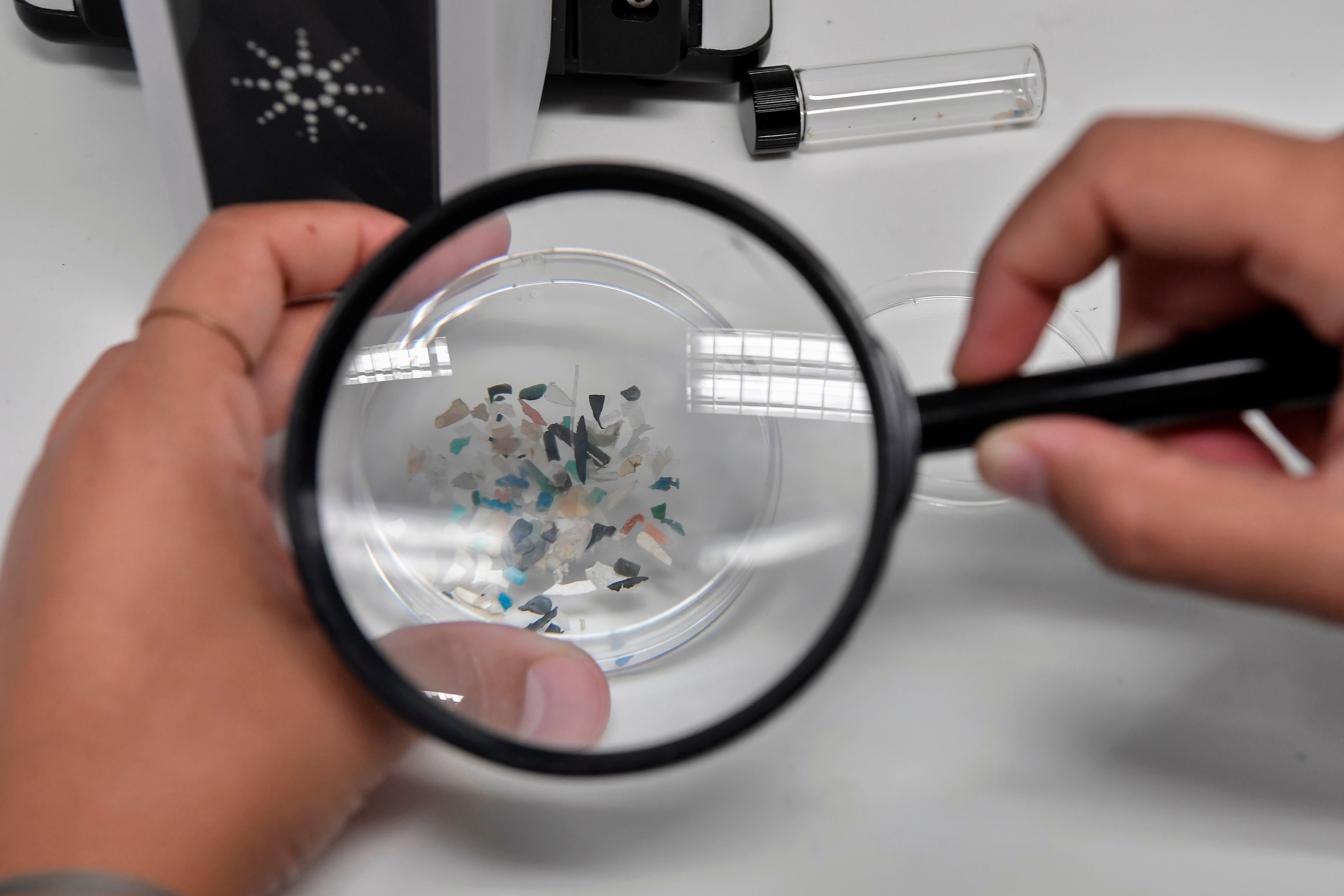The Independent's journalism is supported by our readers. When you purchase through links on our site, we may earn commission.
Bacteria could be used to break down polluting microplastics, scientists suggest
Sticky substance produced by microbes used to trap tiny plastic particles

Your support helps us to tell the story
From reproductive rights to climate change to Big Tech, The Independent is on the ground when the story is developing. Whether it's investigating the financials of Elon Musk's pro-Trump PAC or producing our latest documentary, 'The A Word', which shines a light on the American women fighting for reproductive rights, we know how important it is to parse out the facts from the messaging.
At such a critical moment in US history, we need reporters on the ground. Your donation allows us to keep sending journalists to speak to both sides of the story.
The Independent is trusted by Americans across the entire political spectrum. And unlike many other quality news outlets, we choose not to lock Americans out of our reporting and analysis with paywalls. We believe quality journalism should be available to everyone, paid for by those who can afford it.
Your support makes all the difference.Scientists have found a new method to use a sticky substance secreted by bacteria to trap microplastics, an advance that could lead to better ways of recycling polluting plastic particles.
According to the researchers, including Yang Liu from Hong Kong Polytechnic University, these microplastics - plastic particles less than 5mm in diameter - are not bio-degradable and retain in the environment for prolonged periods.
The plastic particles can absorb harmful chemicals like pesticides, heavy metals, and drug residues at high concentrations due to their very large surface areas.
Recent studies have shown that some of the toxic compounds that microplastics accumulate, as well as the chemicals that make them up, can disrupt human as well as animal endocrine and immune systems, with instances of the pollutants found from the beds of seas to the peak of Mount Everest, stretching all the way from the Arctic ocean to Antarctica.
Researchers have warned the growing microplastic crisis across the planet threatens all life forms from mammals, birds, reptiles, to fishes, soil-dwelling creatures such as earthworms, and even plants, accumulating along the food chain and ultimately ingested by humans.
Now, Liu colleagues suggest that the bacterium Pseudomonas aeruginosa could be used to capture microplastics in a bioreactor.
In their current research, presented on Wednesday at the Microbiology Society Annual Conference 2021, the scientists used a sticky substance called biofilm that is produced by microorganisms – in this case Pseudomonas aeruginosa – to trap and aggregate microplastics, causing them to sink.
Biofilms are created when communities of bacteria band together and secrete a sticky shield made of natural polymeric substances that protect the colony against outside influences such as environmental changes and antibiotics.
In the study, once the tiny plastic particles were captured by the biofilms and had sunk to the bottom of the reactor, the scientists used a “biofilm-dispersal gene,” which caused the trapped microplastics to be released.
According to Liu, this method “allows convenient release of microplastics from the biofilm matrix, which is otherwise difficult and expensive to degrade, so that the microplastics can be later recovered for recycling.”
While the current study was only proof-of-concept, in the following months, the researchers plan to isolate and identify natural pro-biofilm forming bacteria from sewage or other aquatic environments which show “heightened abilities to colonise and form biofilms on microplastics.”
“This provides a basis for future applications in wastewater treatment plants, where microplastics can be removed in a safe and environmentally friendly manner,” the scientists noted in a statement.
Join our commenting forum
Join thought-provoking conversations, follow other Independent readers and see their replies
Comments